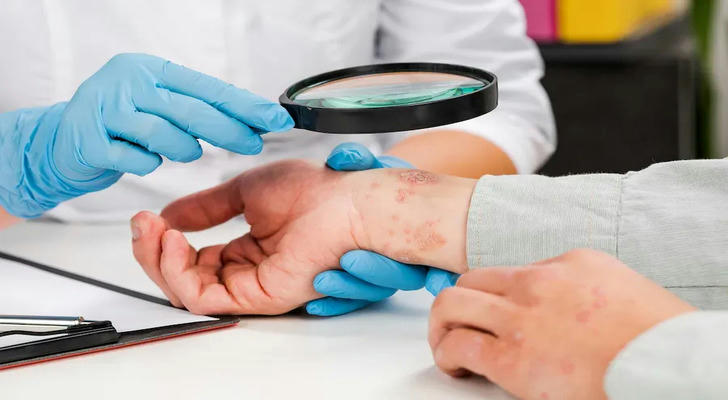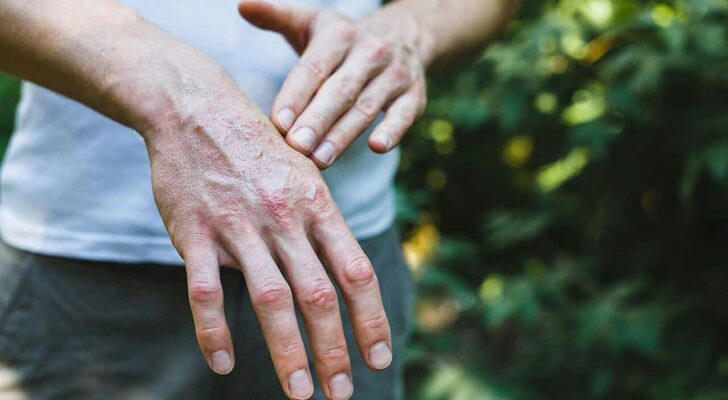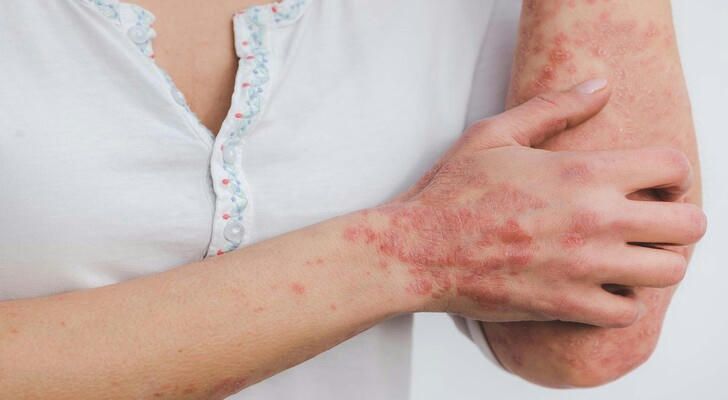Exploring Psoriasis: Understanding Symptoms Treatments And Management

Psoriasis is a long-term skin condition that impacts millions of people around the world. Understanding the causes, symptoms, and treatments of psoriasis is crucial for managing the condition effectively.
Psoriasis is a common skin condition where skin cells grow too quickly, leading to red, scaly patches on the skin. These patches can be itchy, painful, and sometimes very uncomfortable. In some cases, psoriasis can also affect the joints. In the U.S., over 8 million people have psoriasis, making it a widespread skin issue. It can start at any age, but it often first appears between 15 and 35 years old.
Causes of Psoriasis
The exact cause of psoriasis isn’t fully known,but the main causes are genetics, environment, immune system factors and other inducing factors.
1.Genetic factors
Psoriasis can run in families. If someone in your family has it, other family members might have a higher chance of getting it too. Mr. Li, who is 45, was recently diagnosed with psoriasis. He has several relatives with similar skin issues: his father and sister both have psoriasis, and his grandfather had it too. This family history suggests that psoriasis can run in families. Because so many of his family members are dealing with psoriasis, Mr. Li is now more aware of how genetics can influence the condition and has a better understanding of how to manage it.
2.Immune System Factors
Psoriasis is an autoimmune disease where the immune system wrongly attacks healthy skin cells, making them grow too fast and causing the typical scaly rash.
3.Environmental factors
Dry weather, pollution, and changes in seasons can trigger or make psoriasis symptoms worse. Also, infections from viruses or bacteria might cause or worsen psoriasis, especially if your immune system is already weak.
4.Other factors
Stress: Both emotional and psychological stress are common triggers for psoriasis and can make symptoms worse or cause flare-ups.
Diet: Eating a diet high in fat or sugar might influence when psoriasis starts and how severe it becomes.
Medications: Certain medications, like blood pressure drugs, can trigger or make psoriasis symptoms worse.

Types and Symptoms of Psoriasis
The symptoms of psoriasis can be different depending on the type of psoriasis you have.
1.Plaque psoriasis
This is the most common type of psoriasis. It typically shows up as red or dark red patches on the skin, covered with white scales. The patches are usually large, with clear edges, and can be itchy or painful. It is common on the elbows, knees and back.
2.Guttate psoriasis
This type of psoriasis mostly happen in children and teenagers. It appears as small, scattered red spots with white scales on top. Guttate psoriasis often shows up suddenly and is usually found on the trunk and arms or legs.
3.Pustular psoriasis
This type of psoriasis is rare but can be more severe. It shows up as pustules, which are small blisters filled with white or yellow fluid on the skin. These pustules are usually surrounded by red, irritated skin. They might burst, leading to redness and pain. This type can also come with other symptoms like fever and tiredness.
Diagnosis and Treatment
To diagnose psoriasis, doctors typically examines the skin to look for the signs and patterns of the condition. Sometimes, a skin biopsy or blood tests may be needed to confirm the diagnosis. Treatments for psoriasis focus on reducing inflammation, slowing down skin cell growth, and managing symptoms.
Depending on how severe the psoriasis is, treatment options may include creams, light therapy, oral medications, and biologic injections.
For instance, Mr. Bart, who is 60, was diagnosed with plaque psoriasis when he developed red patches and silvery-white scales on his skin. The doctor confirmed this with a skin biopsy and recommended a treatment plan that included steroid and vitamin D3 creams, UVB light therapy, and oral medications.
The doctor also suggested that Mr. Bart keep his skin moisturized, not be stressed, and Healthy diet. With these treatments and lifestyle changes, Mr. Bart was able to manage his symptoms better and improve his skin condition and overall quality of life.

Lifestyle Management and Prevention
Daily Care: Keeping your skin moisturized is important for easing psoriasis symptoms. Using a moisturizer that doesn’t have fragrance can help prevent dryness and itching. Also, avoid harsh soaps or chemicals to minimize skin irritation.
Lifestyle Adjustments: Joining activities that reduce stress, like yoga, meditation, or exercise, can help control your stress levels and may lessen psoriasis flare-ups.
Regular inspection: See your doctor regularly to keep track of how your condition is changing and to check if your treatment is working. Make sure to adjust your treatment plan quickly if needed, so any new issues are taken care of and your condition is well-managed.
Conclusion
Understanding psoriasis’ symptoms, treatments and management is important for effectively managing this long-term skin condition. Getting timely medical care, staying on top of daily skin care, making lifestyle changes, and having regular check-ups are key to controlling the disease and preventing symptoms from getting worse. By taking these steps, you can better handle the challenges of psoriasis and enhance your overall health.
